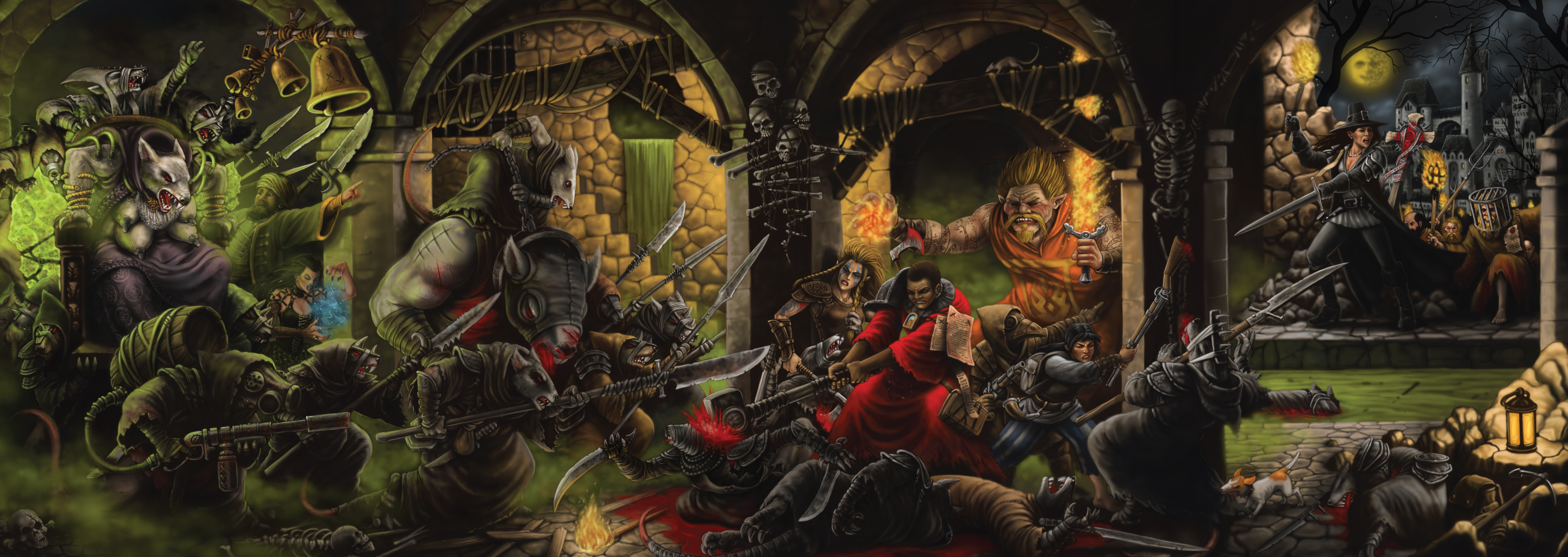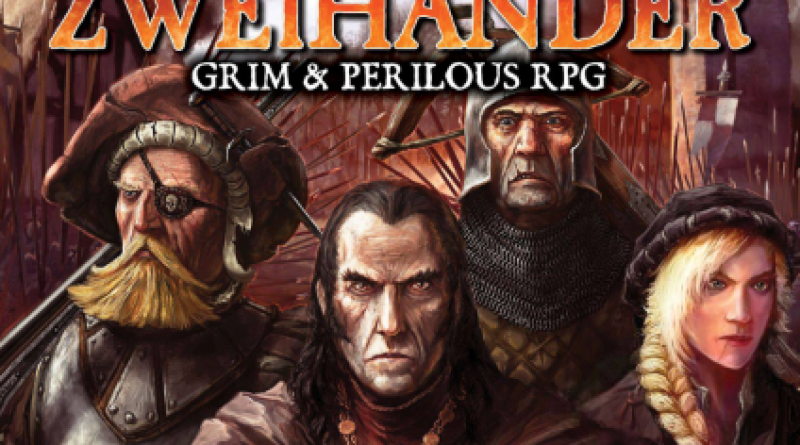RPG Review: Zweihander Core Rulebook
Zweihander is the winner of the 2018 Ennie for Best Game and Product of the Year. Influenced and inspired by Warhammer Fantasy Roleplay, Zweihander is a grimdark, low-magic game where you will have to scrape and claw your way through life to survive.
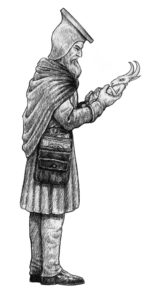 Zweihander is a game that has taken a long and winding path to get to the point it is at now. It originally appeared as a hack to update and change the Warhammer Fantasy RP over on Strike-To-Stun, a website I used to frequent back in high school in order to track down new house rules for Mordheim. It changed and expanded from there. Over the years, it was steadily refined until 2016 when it was launched on Kickstarter. It was released in 2017, and won the Ennie in 2018.
Zweihander is a game that has taken a long and winding path to get to the point it is at now. It originally appeared as a hack to update and change the Warhammer Fantasy RP over on Strike-To-Stun, a website I used to frequent back in high school in order to track down new house rules for Mordheim. It changed and expanded from there. Over the years, it was steadily refined until 2016 when it was launched on Kickstarter. It was released in 2017, and won the Ennie in 2018.
Zweihander utilizes a percentile system, meaning you’ll be rolling a percentile die for any of your Skill rolls. Your skills have ranks, each of which provides a +10 to the attribute associated with it. You add your attribute and skill ranks, and attempt to roll under your skill in order to succeed. The difficulty of the task will modify the target number as well, with an Arduous task (the hardest difficulty) providing a -30 modifier. Here’s an example from the book:
Credence Redding is attempting to use a Coordination Test. Coordination is an Agility-based Skill. His Agility is 45%, while he has 3 total Skill Ranks in Coordination. This gives a Base Chance of 75% (45 + 10 + 10 + 10). However, Credence is suffering from “Ignore 2 Skill Ranks” on the Peril Condition Track. This means that his Base Chance is now only 55% (45 + 10).
The Peril Track is another interesting aspect to the game as well. Peril is caused by excessive or mental strain, often caused by fatigue or emotional stressors. The track causes you to temporarily lose Skill Ranks until you can recover.
Character creation is straightforward. Each of your attributes begins at 25, and you roll 3D10 to add to each. You place these in order, but the GM may, if they’re feeling merciful, allow you to choose which attributes each roll will apply to.
Ancestry is the term used in place of Race, which I’ve seen games such as Pathfinder also switching to, which I appreciate. Ancestries include Human, Dwarf, Elf, Gnome, Halfing and Ogre. You can randomly roll to determine your ancestry, if you choose, which I appreciate. GMs may choose to change the probability of races depending on the setting, or remove all ancestries except for humans if you’re running a game set in the historical middle ages, or are playing in a humanocentric world.
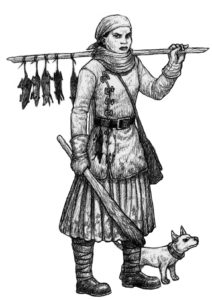 A large part of character creation is Professions, which fall under Archetypes. Characters will choose (or randomly roll) an Archetype, which are: Academic, Commoner, Knave, Ranger, Socialite and Warrior. Your Archetype determines your starting trappings and gear, and then your Profession (again, chosen or randomly rolled). Professions include things like Watchman, Squire, Monk or Informer. Once you have enough skill ranks, you may enter Expert professions such as Necromancer or Rune Thane. Characters can also move between different Professions, but from the start, if you’re playing a new character, their jobs won’t be pretty and glamorous. Only the brave and the lucky live long enough to be come Veterans and Warlocks.
A large part of character creation is Professions, which fall under Archetypes. Characters will choose (or randomly roll) an Archetype, which are: Academic, Commoner, Knave, Ranger, Socialite and Warrior. Your Archetype determines your starting trappings and gear, and then your Profession (again, chosen or randomly rolled). Professions include things like Watchman, Squire, Monk or Informer. Once you have enough skill ranks, you may enter Expert professions such as Necromancer or Rune Thane. Characters can also move between different Professions, but from the start, if you’re playing a new character, their jobs won’t be pretty and glamorous. Only the brave and the lucky live long enough to be come Veterans and Warlocks.
Beyond the rest of the initial things you must do to complete your character, you will also randomly receive a Dooming, something a prognosticator predicts in your youth, which will determine how your character will die, or how their life will be difficult. Things like, “beware fairy rings and standing stones,” or “new beginnings herald sudden ends.” These have no mechanical rules, they’re simply something that hangs over your character’s head, something to keep your eye on, and the GM to use in the game in relation to your character.
 One thing I love that aligns with other, more down-to-earth Middle Ages-era RPGs is that coinage is confusing and requires effort. 240 brass pennies is one gold crown, which is far more than any peasant would see; farmhands earn an average of 2 brass pennies a day. It’s a minor detail, but I love the detail it adds to the game, forcing the players to remember conversion rates like you would in the middle ages. The game has pretty extensive weapons, covering the wide variety of weapons available in the time period, including pistols and rifles.
One thing I love that aligns with other, more down-to-earth Middle Ages-era RPGs is that coinage is confusing and requires effort. 240 brass pennies is one gold crown, which is far more than any peasant would see; farmhands earn an average of 2 brass pennies a day. It’s a minor detail, but I love the detail it adds to the game, forcing the players to remember conversion rates like you would in the middle ages. The game has pretty extensive weapons, covering the wide variety of weapons available in the time period, including pistols and rifles.
Combat works pretty much like you’d expect from most RPGs, with players acting in intitiative order. All characters have 3 Action Points to spend. Actions allow players to move and attack, but can also be held onto in order to dodge or parry when it isn’t your turn. Certain actions cost more than 1 AP, such as getting off the ground, running, or maneuvering. Magick costs variable AP, so some spells just take longer to cast.
The Fury Die is one of the D6’s you roll when dealing damage, and functions like the the Wild Die from the Star Wars D6 system, exploding and allowing you to reroll and add it to the total damage, so you can end up dealing massive amounts of damage if the dice come out in your favor.
Healing is a long and lengthy process, as in real life. The Damage Condition Track monitors this. As you take wounds, you will move from Unharmed through multiple conditions to Grievously Wounded, before finally being Slain. Recovering from these conditions is a lot of work! Rest, healing, and Magick are the only ways to recover over time.
Speaking of Magick, a few Professions are capable of using Magick. You will choose your spell, choose whether you want to channel your energy (which will cause the spell to cost more AP) to make it easier to cast, then cast it, with a difficulty set by the type of spell it is.
The book has a nice implied setting, fleshing out details about the gods and the creatures, while not really giving a specific setting. We don’t know anything about the world, we don’t know the governments, but throughout the book you can pick up implications here and there. It’s a definite Old World setting, and would fit in well running Game of Thrones, Warhammer Fantasy, Shadow of the Demon Lord, or any other dark fantasy setting.
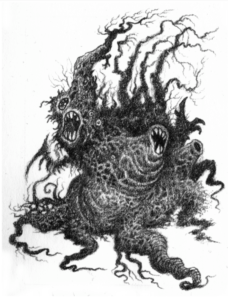 The bestiary in the book is very extensive, with a ton of different monsters who are separated into categories (like Demons and Beasts), includes their stats, traits, and has a pretty decent bit of background and information on them. One thing I really like about the stat blocks is that you can only know the most rudimentary information about the the system, and you can fully understand the stat block. The stat blocks even include their trappings, in case your players really want to strip their enemies of their personal possessions. There are a lot of creatures here that you could legitimately run a Warhammer campaign, including rat-people called the Skrzzak, just like the Skaven.
The bestiary in the book is very extensive, with a ton of different monsters who are separated into categories (like Demons and Beasts), includes their stats, traits, and has a pretty decent bit of background and information on them. One thing I really like about the stat blocks is that you can only know the most rudimentary information about the the system, and you can fully understand the stat block. The stat blocks even include their trappings, in case your players really want to strip their enemies of their personal possessions. There are a lot of creatures here that you could legitimately run a Warhammer campaign, including rat-people called the Skrzzak, just like the Skaven.
The book concludes with a nice little adventure, A Bitter Harvest. It’s designed for starting characters and starting game masters. It includes chases, combat and social situations. At the beginning, it tells you exactly what sections of the book you should make sure to read before you run the adventure, which makes it super convenient. The adventure is one “whose horror results in petty human selfishness while selling out humans to mutants might be the right (or at least wrong) solution.” I don’t want to give much away, in case you get the chance to be a player. The adventure contains lots of side bars of “playtest notes”, telling you how their particular group handled scenes, so you know what to expect, and see how players diverged from the written narrative.
This book is absolutely massive. At 674 pages, it covers everything you’d need to run an ongoing campaign. Were I to run a game set in the Warhammer Fantasy Old World, I’d have to take a close look to decide whether to run this or Warhammer Fantasy 4e.
It’s a book definitely worth checking out. I highly recommend it.
Grim & Perilous Studio sent a copy of the Zweihander Revised Core Rulebook PDF to Dice Monkey for review. You can pick up a copy of Zweihander here (affiliate link).
